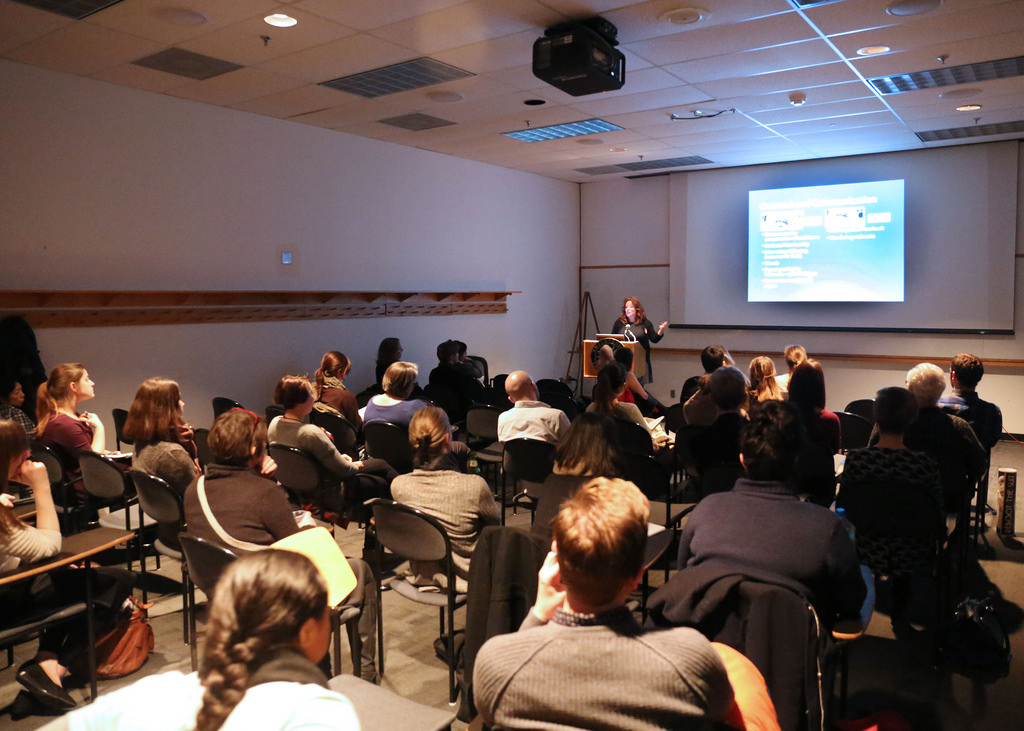Amber Kerr, paintings conservator at the Smithsonian American Art Museum, talked about the use of social media and how to streamline the process in her 3-Ring Circus presentation titled Lets#This: Social Media Tips for Public Outreach. Kerr has served as the social networking editor for the International Institute for Conservation of Historic and Artistic Works (IIC) since 2009; with responsibilities that include maintaining and updating ICC’s Facebook, Twitter, and LinkedIn accounts. It is in this capacity that she presented on the administrative tasks and tips associated with her volunteer work for the IIC.

IIC uses social media to share news stories and articles related to conservation, to attract new members, and to act as a forum for webinars and announcements in the field. Social media is a platform for the public to ask questions and to create a dialogue between conservators across the globe with their colleagues and with general audiences. The social media platforms of Facebook, Twitter and LinkedIn, provide varied, yet complimentary methods for the IIC to support their goal of spreading information about conservation as a profession. The open structures of Facebook and Twitter share international perspectives and events related to the preservation of cultural heritage to a broader audience, while the professional structure of LinkedIn increases dialogues and discussions for more focused conservation topics on a global level.
Kerr used the IIC Facebook page as the primary example of their social media outreach in her presentation. In addition to being a source of information sharing, she showed that the ‘Insight’ pages of a Facebook group provide tools to track who is viewing the posts and provide valuable demographic information. For example, Facebook allows administrators to see which posts were viewed or shared the most by their followers. This information can help understand the topics followers are most interested in and improve the type of content that is selected for posting. The IIC is also able to see who they are reaching from a global perspective, with demographics showing that some of the largest numbers of followers are those in countries without professional organizations in the field of conservation.
Kerr also shared the administrative tips she has learned over the years. Her first tip was that of consistency. That is, create a convenient schedule for posts and make it a habit you can stick to (she often uses her morning coffee break time), and keep the logo and formatting across all social media platforms consistent in appearance so that your organization is easily recognizable. Another tip was to engage the public by permitting screened postings from other people or organizations, thus encouraging them to share opinions and news to create a more open dialogue. Kerr stressed that using social media should be fun and not time consuming. She uses Google news alert emails based on key word searches (such as ‘conservation’ or ‘art restoration’)to keep on top of news articles about conservation or related fields, then posts relevant links to the online source using the IIC Social Media pages. Overall, Kerr showed the audience that social media sites are a great outreach tool and can be done in such a way that does not take up too much of one’s time.
Summarized by Laura McNulty